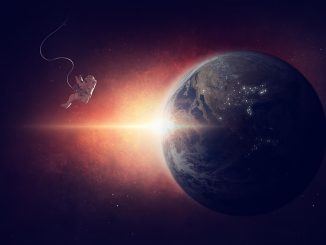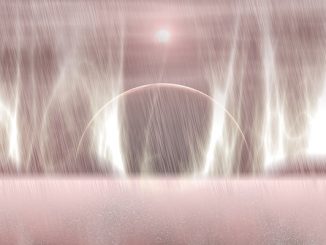
Since its discovery last year, aside from the fact that it is orbiting Proxima Centauri — our nearest star neighbor which sits approximately 4.2 light years (or 25.2 trillion miles) from Earth — what we know for certain about Proxima B (short for Proxima Centauri B) is that it has a mass that’s 1.3 times our planet, and it completes 1 orbit in 11.2 days. On the deductive side, because of its mass, it is believed to have a rocky surface much like the Earth’s. And because it orbits its star in the habitable zone — where temperature is neither too hot nor too cold for liquid water to form — it might just be possible that it can sustain some form of life.
For sure, what we don’t know about Proxima B far outweighs what we know about it, meaning – we can mostly just speculate and simulate. And that’s just what a team of researchers at the University of Exeter did. They simulated different kinds of atmospheres and the potential climate that Proxima B could have. From there, they set out to postulate whether life could thrive on the planet or not.
To be more specific, they inputted Proxima B’s data on the Met Office Unified Model — a model designed to simulate Earth’s weather and climate — and played around with different kinds of scenarios, including a variety of atmospheres and changes in its orbit.
They found that if Proxima B had an atmosphere similar to what the Earth has, there’s a pretty good chance that it will be able to support liquid water, and consequently, it might be able to support life. The same holds true if it had a much simpler atmosphere, made up mostly of nitrogen and small traces of carbon dioxide.
In terms of orbit, they found that even if Proxima B behaved like Mercury did — spinning three times on its axis every two revolutions around its host star — if it had an atmosphere like the Earth, parts of it might still be able to support water.
They also looked into how the climate would be if the planet was ‘tidally-locked’ , meaning, one day is equal to one year so one side of the planet is always facing its host star. Even under this condition, the formation of liquid water would still be possible.
Another remarkable feature the planet has is that the light it receives from its host star is mostly in the near infra-red. As Dr. James Manners — one of the study co-authors — explained to Wired: “These frequencies of light interact much more strongly with water vapour and carbon dioxide in the atmosphere which affects the climate that emerges in our model. In fact, we found that moving to an eccentric orbit, resulted in more of the surface potentially being habitable.”
As promising as the results of the simulations are, however, they’re still considered speculative at this point. This means eventually, we’ll still need to send some kind of probe to find out what’s really happening on the planet. Obviously, we can’t pin our hopes on lots of maybes and possiblys, especially when the point of all this is to find a suitable second home for our entire species.
The research was recently published in the journal Astronomy & Astrophysics.
- Bulenox: Get 45% to 91% OFF ... Use Discount Code: UNO
- Risk Our Money Not Yours | Get 50% to 90% OFF ... Use Discount Code: MMBVBKSM
Disclaimer: This page contains affiliate links. If you choose to make a purchase after clicking a link, we may receive a commission at no additional cost to you. Thank you for your support!




Leave a Reply